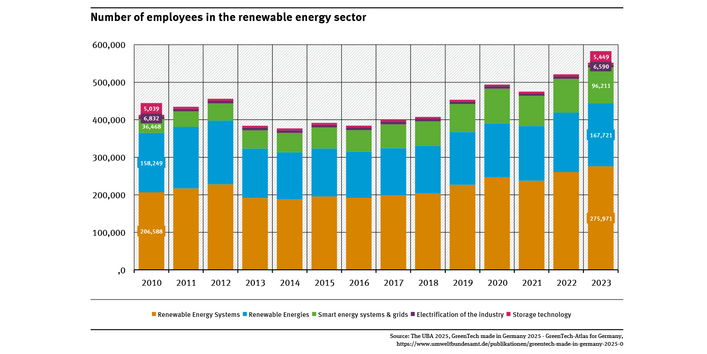The use of renewable energies – such as wind, solar, geothermal, hydropower and biomass – is an indispensable contribution to climate protection and resource conservation. Expanding renewable energies not only benefits climate protection and the labour market. It represents an essential contribution to the security of energy supply and reduces dependency on energy imports.
The indicator shows the development of the number of people employed in the renewable energy sector in Germany. Overall, it clearly shows that many people in Germany work in the field of renewable energies and contribute to the energy transition. In addition to the traditional fields associated with renewable energies (solar energy, wind energy, bioenergy, hydropower, geothermal energy), the indicator also records employment related to storage technologies, smart energy systems and grids, and the industry’s electrification. Especially intelligent energy systems and grids have seen a rapid increase in employment since 2010. This highlights the relevance of digitalisation for the energy transition.
